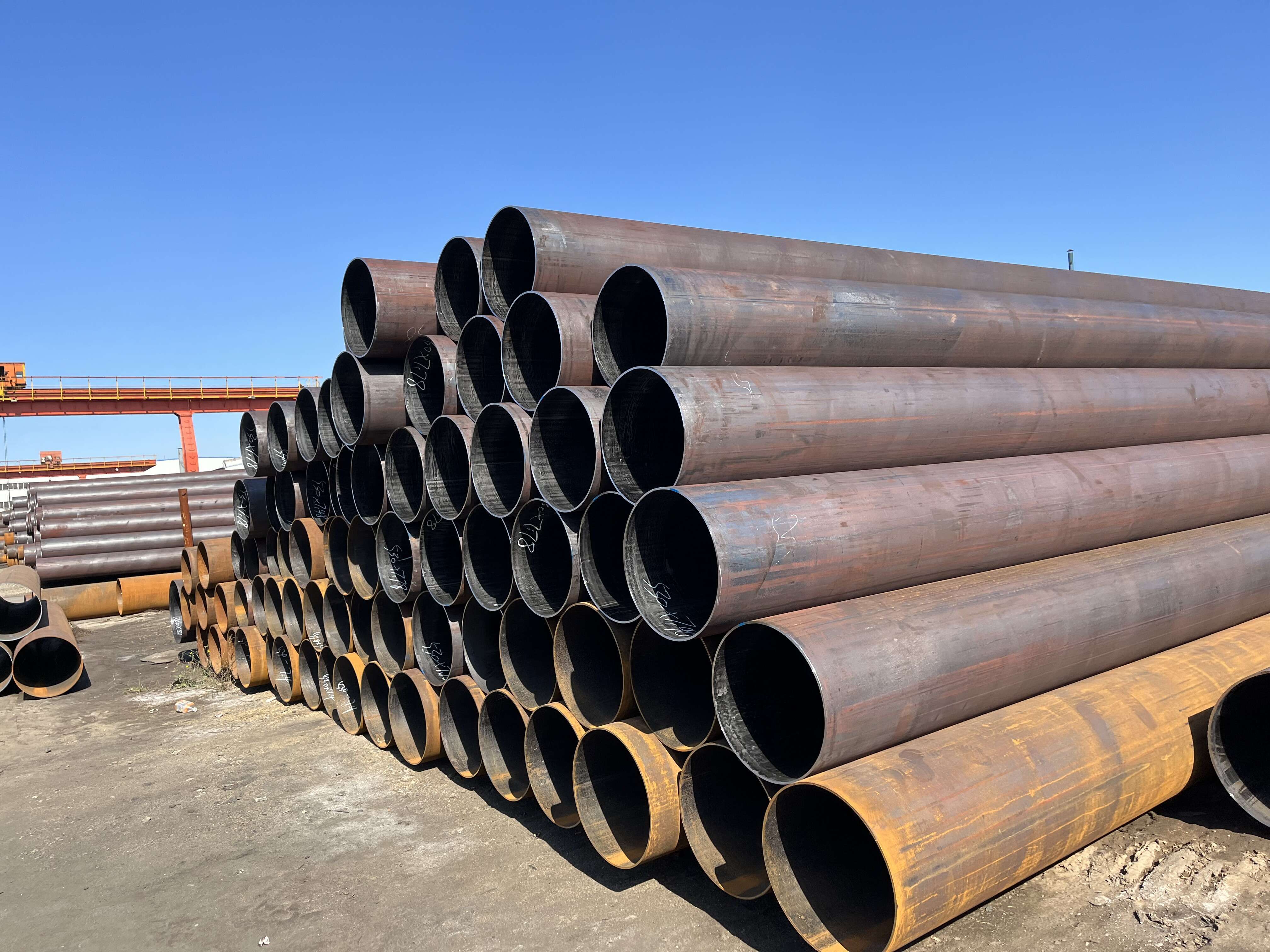Pores in welded seam of welded steel tube not only affect the tightness of pipe weld and cause pipe leakage, but also become the induction point of corrosion, which seriously reduces the strength and toughness of weld.
The factors that cause pores in the weld are: moisture, dirt, oxide scale and iron filings in the flux, welding composition and coverage thickness, surface quality of the steel plate, edge plate treatment of the steel plate, welding process and steel pipe forming process, etc.
Related preventive measures:
1. Flux composition. When welding contains an appropriate amount of CaF2 and SiO2, it will react and absorb a large amount of H2 to generate HF with high stability and insoluble in liquid metal, thereby preventing the formation of hydrogen pores.
2. The accumulation thickness of the flux is generally 25-45mm, the flux particle size is large, and the density is small, the accumulation thickness takes the maximum value, and vice versa takes the minimum value. For high current and low welding speed, take the maximum value for the accumulation thickness, and vice versa, take the minimum value. In addition, in summer or when the air humidity is high, the recovered flux should be dried before use.

3. Steel plate surface treatment. In order to prevent sundries such as iron oxide scale falling off from uncoiling and leveling from entering the forming process, a plate surface cleaning device should be installed
4. Steel plate edge treatment. Rust and burr removal devices should be installed on the edge of the steel plate to reduce the possibility of air holes. The location of the removal device is preferably installed behind the edge casting machine and the disc shears. The structure of the device is two active wire wheels with adjustable gaps on one side, which press the edge of the plate up and down.
5. Weld morphology. The forming coefficient of the weld seam is too small, the shape of the weld seam is narrow and deep, the gas and inclusions are not easy to float out, and it is easy to form pores and slag inclusions. Generally, the weld forming coefficient is controlled at 1.3-1.5, the maximum value is taken for thick-walled welded pipes, and the minimum value is taken for thin-walled welded pipes.
6. Reduce the secondary magnetic field. In order to reduce the influence of magnetic deflection, the connection position of the welding cable on the workpiece should be as far away as possible from the welding terminal, so as to avoid the secondary magnetic field generated by part of the welding cable on the workpiece.
7. Process. The welding speed should be appropriately reduced or the current should be increased to delay the finish speed of the weld pool metal so that the gas can escape. At the same time, if the delivery position of the strip steel is unstable, it should be adjusted in time to avoid frequent fine-tuning of the front axle or rear axle to maintain the shape, causing difficulty in gas escape.
The factors that cause pores in the weld are: moisture, dirt, oxide scale and iron filings in the flux, welding composition and coverage thickness, surface quality of the steel plate, edge plate treatment of the steel plate, welding process and steel pipe forming process, etc.
Related preventive measures:
1. Flux composition. When welding contains an appropriate amount of CaF2 and SiO2, it will react and absorb a large amount of H2 to generate HF with high stability and insoluble in liquid metal, thereby preventing the formation of hydrogen pores.
2. The accumulation thickness of the flux is generally 25-45mm, the flux particle size is large, and the density is small, the accumulation thickness takes the maximum value, and vice versa takes the minimum value. For high current and low welding speed, take the maximum value for the accumulation thickness, and vice versa, take the minimum value. In addition, in summer or when the air humidity is high, the recovered flux should be dried before use.

3. Steel plate surface treatment. In order to prevent sundries such as iron oxide scale falling off from uncoiling and leveling from entering the forming process, a plate surface cleaning device should be installed
4. Steel plate edge treatment. Rust and burr removal devices should be installed on the edge of the steel plate to reduce the possibility of air holes. The location of the removal device is preferably installed behind the edge casting machine and the disc shears. The structure of the device is two active wire wheels with adjustable gaps on one side, which press the edge of the plate up and down.
5. Weld morphology. The forming coefficient of the weld seam is too small, the shape of the weld seam is narrow and deep, the gas and inclusions are not easy to float out, and it is easy to form pores and slag inclusions. Generally, the weld forming coefficient is controlled at 1.3-1.5, the maximum value is taken for thick-walled welded pipes, and the minimum value is taken for thin-walled welded pipes.
6. Reduce the secondary magnetic field. In order to reduce the influence of magnetic deflection, the connection position of the welding cable on the workpiece should be as far away as possible from the welding terminal, so as to avoid the secondary magnetic field generated by part of the welding cable on the workpiece.
7. Process. The welding speed should be appropriately reduced or the current should be increased to delay the finish speed of the weld pool metal so that the gas can escape. At the same time, if the delivery position of the strip steel is unstable, it should be adjusted in time to avoid frequent fine-tuning of the front axle or rear axle to maintain the shape, causing difficulty in gas escape.









